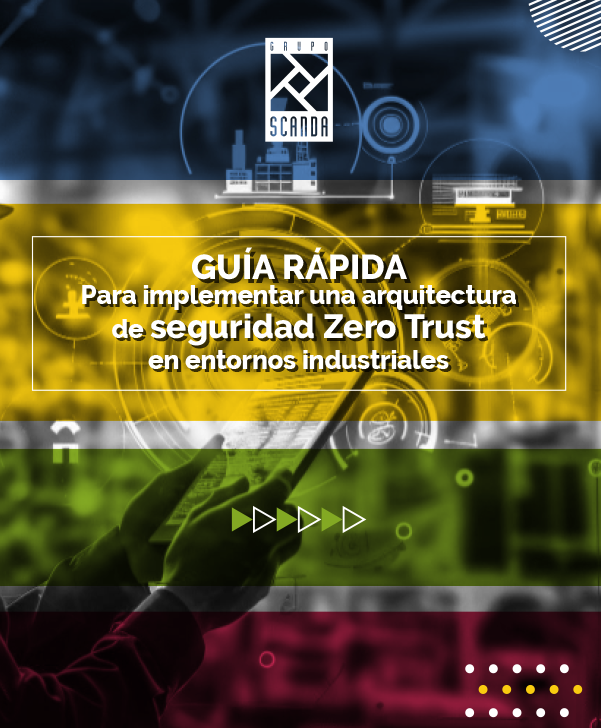Quick guide: Zero Trust in industrial environments
How to implement a Zero Trust security architecture to protect OT/IT operations.

Introduction
Digitization in manufacturing increased efficiency and visibility, but also increased exposure to threats, especially with OT/IT convergence. The "trust by location" model is no longer sufficient: Zero Trust becomes the standard for protecting critical operations.

What is Zero Trust and why apply it in manufacturing?
Zero Trust assumes that no entity - internal or external - is trusted by default; all access is verified, authorized and monitored continuously. In manufacturing, it involves controlling access by shift/plant, protecting industrial networks, segmenting critical systems (OT, SCADA, PLC) and verifying users, devices and apps in real time.
Step 1. Identify critical assets and map flows
Before applying Zero Trust controls, understand what you need to protect. Inventory industrial SCADA, MES, ERP; OT equipment (PLC, sensors, HMI); industrial IoT; and all users (shifts, contractors, technicians). Map communications and data paths.
- Complete inventory of systems and devices
- Map of TO/IT flows and dependencies
- Prioritization of critical assets

Step 2. Implement Identity and Access Control (IAM)
Ensures that only the right users access the right resources under defined conditions.
- Access by role, function and schedule
- MFA and temporary access to suppliers/technicians
- Automatic revocation at the end of shifts

Step 3. Segment your network (micro-segmentation)
Limits lateral movement. If a part of the system is compromised, the attacker must not move freely.
- Separate OT and IT networks with differentiated policies
- Segmentation by cell, asset or zone
- VLANs, ACLs and granular policies

Step 4. Continuous Monitoring and Automated Response
Real-time visibility: access events, traffic and behavioral anomalies. Detects deviations and automates responses (blocking, alerts, containment).
- Unified OT/IT telemetry
- Anomaly detection and event correlation
- Automated response playbooks

Step 5. Compliance and continuous improvement
Zero Trust is a living strategy. It documents authentication/access policies, segmentation, vulnerability management and incident response. Assesses risk and compliance (e.g. IEC 62443, ISO/IEC 27001).
- Updated and auditable policies
- Maturity metrics and periodic assessment
- Continuous improvement plan

Conclusion
Adopting Zero Trust in industrial environments protects operational continuity, process integrity and customer confidence. With a phased approach and the right solutions, you can reduce risk without slowing down innovation.

